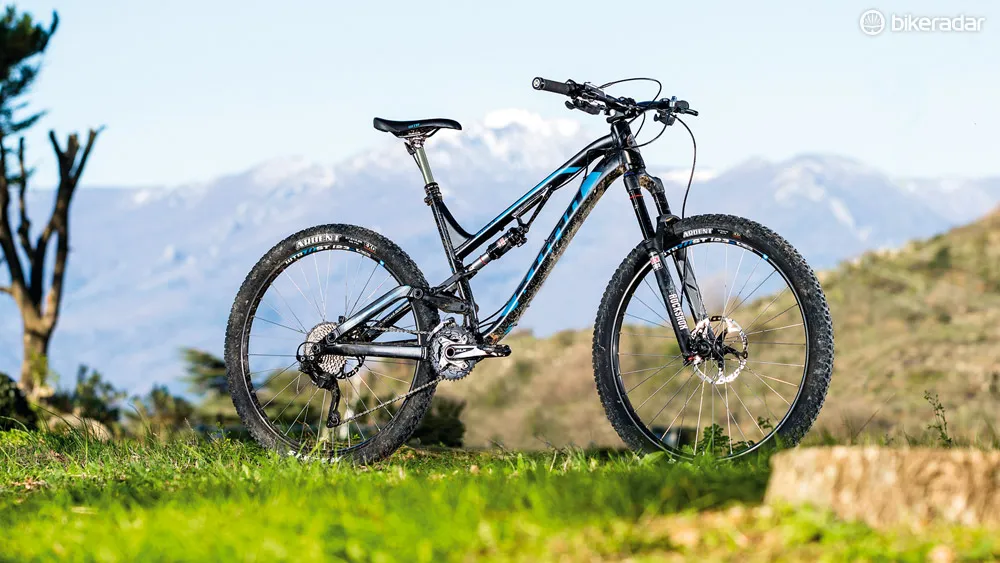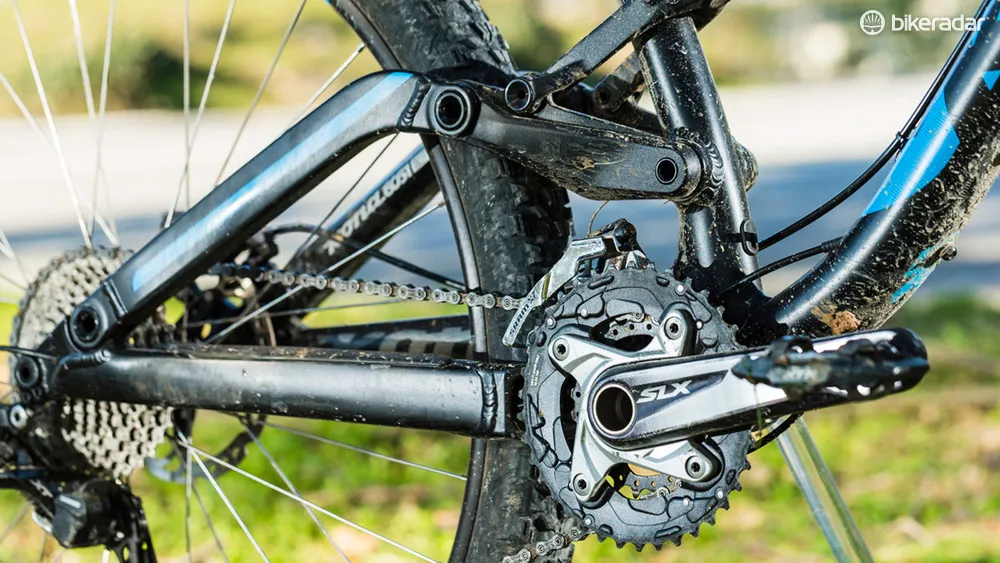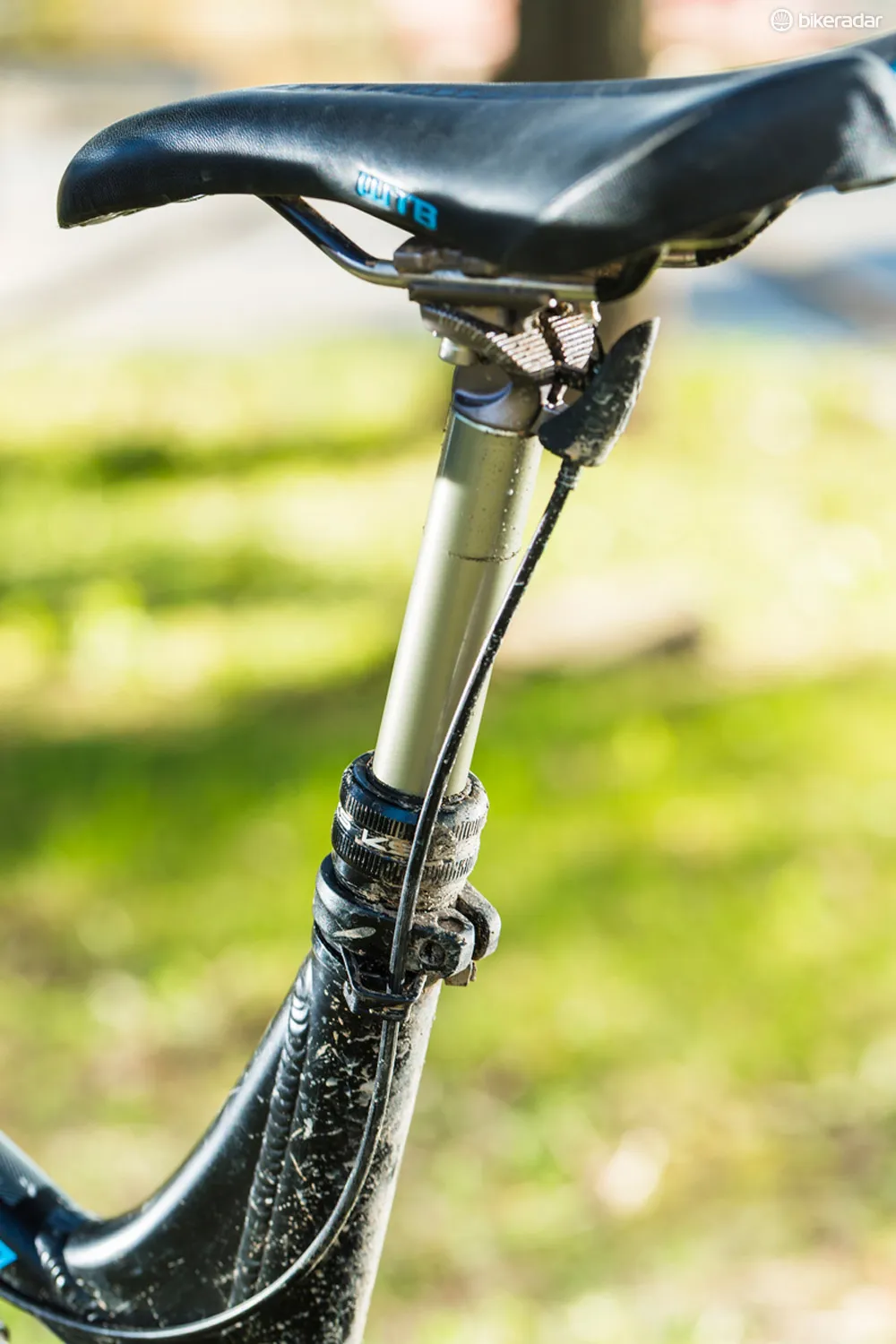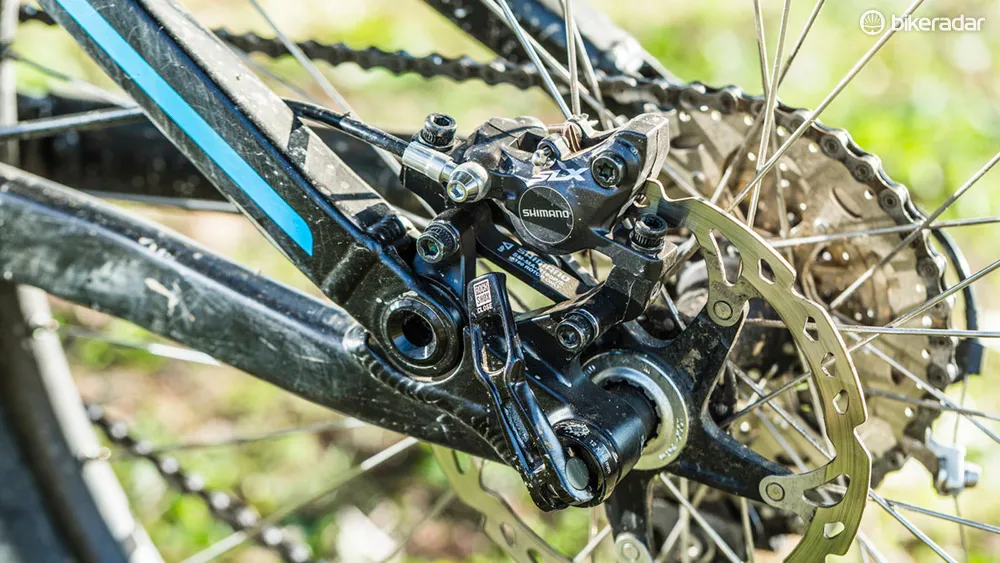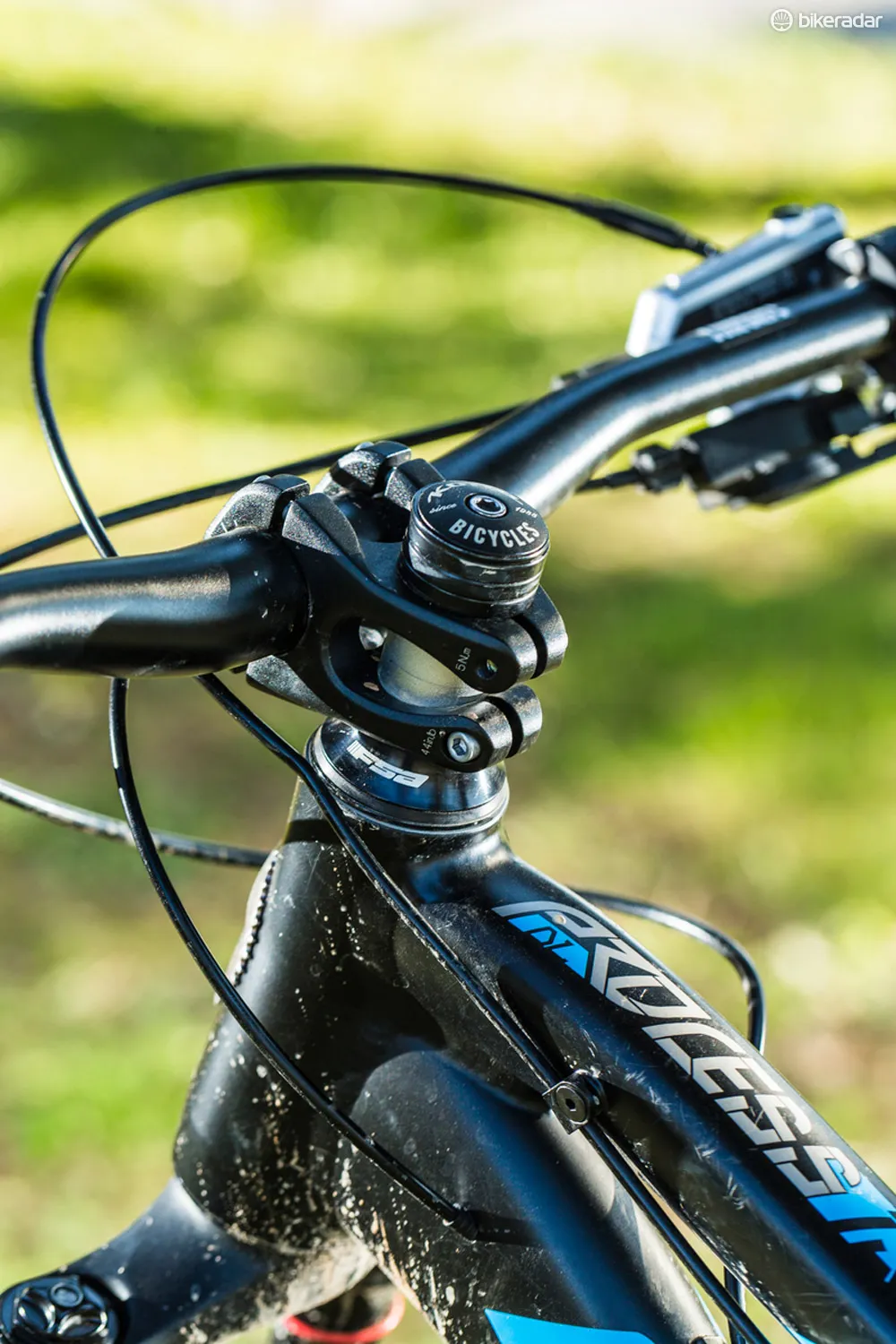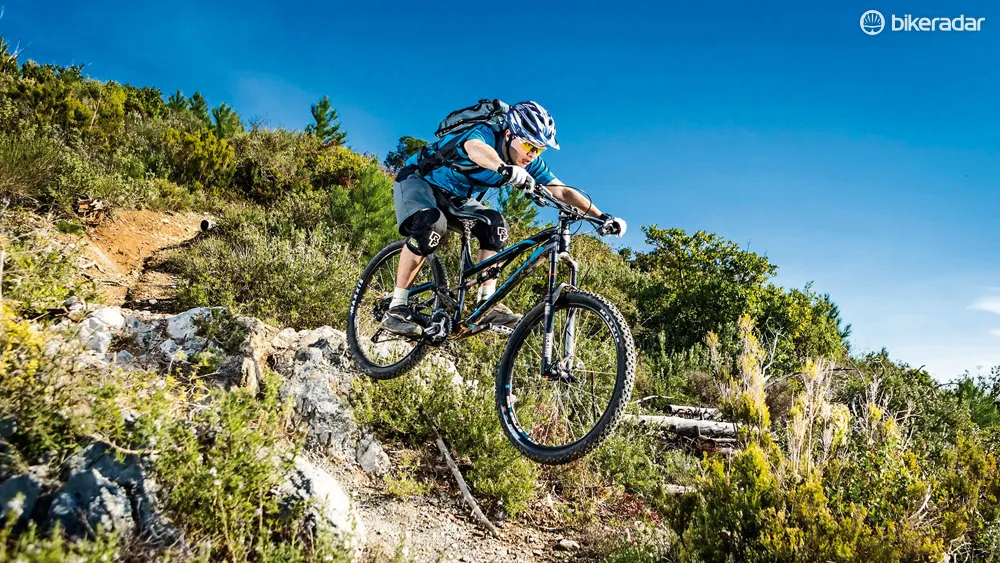Kona’s always been popular with hardcore bikers who ride their bikes like they stole them. Looking at the back end of the Process frame, it’s clear this is a machine that can take massive amounts of punishment.
Frame and equipment: when the going gets tough…
Massive curved seatstays arc over to join a carbon-bridged linkage, and the pivots at the far end are similarly huge – it’s no surprise this frame is shared with the 6in-travel Process 153 family.
We rode the arse out of the Process for a couple of months in the UK before heading to Italy, and wherever we were or whatever we launched it off, it sucked it up and asked for more. Despite ‘only’ being a single-pivot design, in reality the RockShox Monarch RT-damped rear flows through staccato rocks and self-pumps through boulder lines with the wheel glued to the ground.
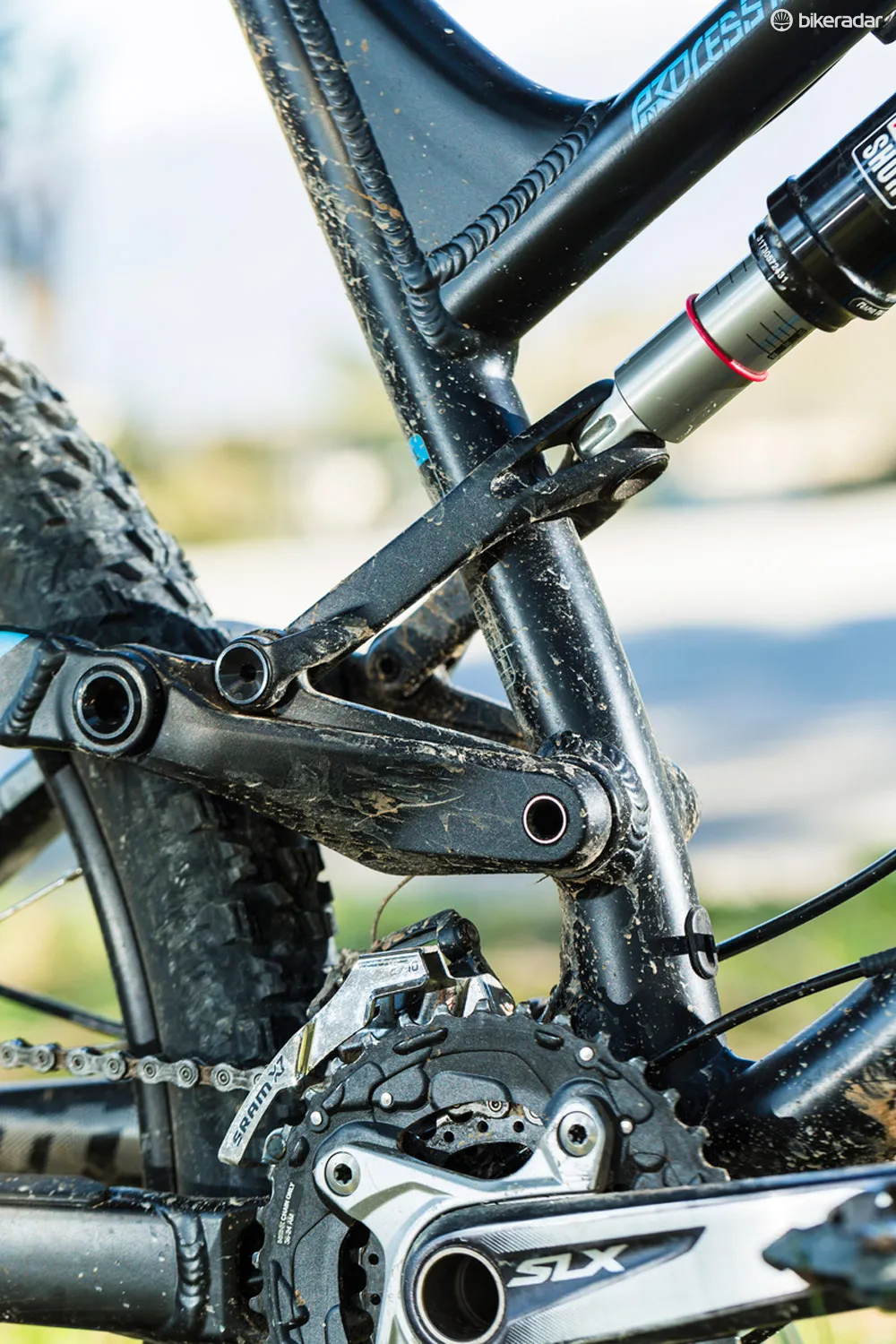
The impeccably tuned RockShox Monarch hoovers up whatever you can throw at it
At only 16.6in long, the chainstays are super short too, which keeps reaction time to a minimum; the Process loves flicking and flaring sideways at every opportunity.
Ride and handling: clever cockpit
Kick hard through the twin-ring SLX cranks and it connects and drives immediately and with little bob or bounce, even when you’re giving it full gas. With the suspension rigged to run high for cornering clarity there’s a lot of room under the bottom bracket, so you can keep the power on through rougher sections more than most bikes here.
Fast-rolling Maxxis Ardent tyres keep the Kona competitive on climbs despite its overall weight being high for the money. The relatively easy speed also helps the Process 134 justify its presence in the range between the bigger 153 bikes and the shorter-travel 110 29er, but yet again there’s one frustrating aspect we haven’t talked about.
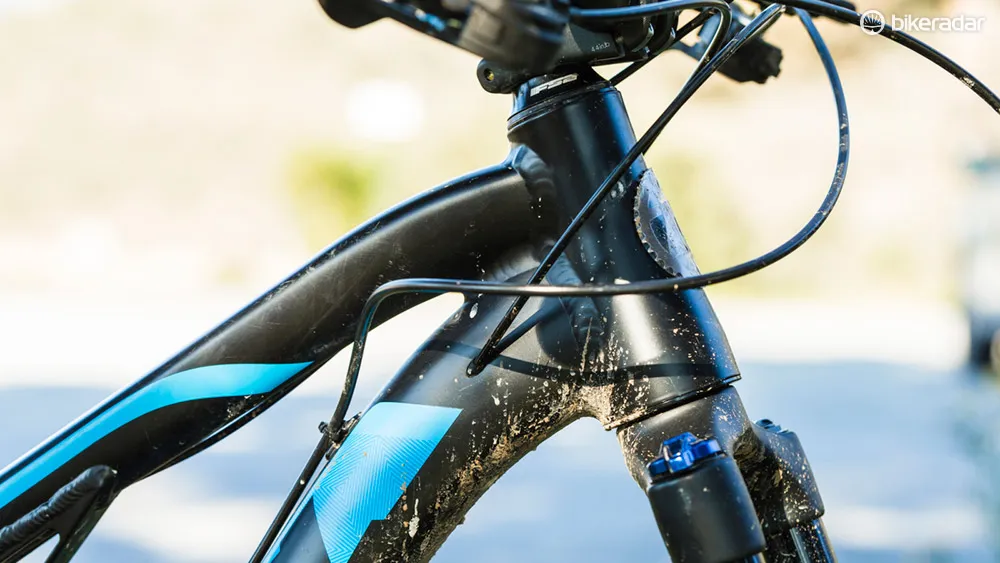
The 134's 68-degree head angle can spring unpleasant surprises on the unwary
It’s not the cockpit. A long top tube and tiny 40mm stem holding the 750mm bars give the Kona almost Mondraker-fast reactions and feel. It’s got an insatiable hard-cornering itch that only trying to drag its bar ends through corners will scratch.
It’s not the consistently controlled stroke of the RockShox Revelation fork either. The problem is that, while the rest of the bike demands you hit everything full on, the 68-degree head angle can’t match its control and stability.
Around slow switchbacks – or if you like BMX-fast reactions in general – it’s great, but on loose or random rocks it can snap round underneath you and fire you down the trail, instead of drifting it out the way a slacker angle could.
The 153 gets a friendlier 66.5-degree head angle that’ll sort this out for slack fans who manage to find one, and that leaves the 134 as a gonzo-capable, shorter-travel riot bike for sharp riders who want a faster and looser feel.
This article was originally published as part of What Mountain Bike magazine's Trail Bike of the year awards. What Mountain Bike is available on Apple Newsstand and Zinio.
